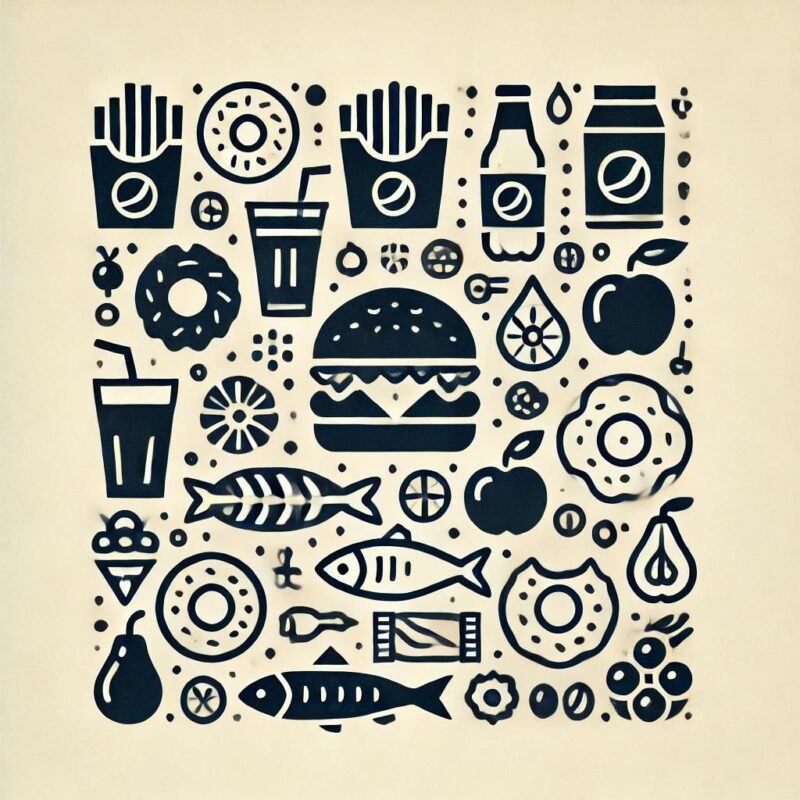How Nutrition Affects Inflammation and Pain – And How PEMF Can Help
Chronic inflammation is at the root of many health problems, including persistent pain, autoimmune disorders, and metabolic diseases. While medication can provide relief, lifestyle factors—especially […]
Chronic inflammation is at the root of many health problems, including persistent pain, autoimmune disorders, and metabolic diseases. While medication can provide relief, lifestyle factors—especially nutrition—play a crucial role in controlling inflammation naturally. In this blog, we’ll explore how diet impacts chronic inflammation and pain, and how PEMF (Pulsed Electromagnetic Field) therapy can be a powerful complementary tool for relief.
The Link Between Nutrition and Inflammation
Table of Contents
The food we eat can either fuel or fight inflammation. Certain foods promote inflammatory responses in the body, while others help reduce it and support healing.
Foods That Increase Inflammation
- Processed sugars and refined carbohydrates (e.g., white bread, pastries, sodas) trigger insulin spikes and inflammation.
- Trans fats and vegetable oils (e.g., fried foods, margarine) promote oxidative stress and inflammatory markers.
- Excess red meat and processed meats (e.g., sausages, bacon) contain high levels of advanced glycation end-products (AGEs) that trigger inflammation.
- Dairy for some individuals can lead to an inflammatory response, particularly in those with lactose intolerance or dairy sensitivity.
- Alcohol and excessive caffeine can contribute to chronic inflammation when consumed in excess.
Foods That Reduce Inflammation
- Omega-3 fatty acids (found in salmon, flaxseeds, and walnuts) help balance the inflammatory response.
- Leafy greens and colorful vegetables (e.g., spinach, kale, bell peppers) are packed with antioxidants that neutralize free radicals.
- Berries and citrus fruits provide vitamin C and flavonoids, reducing oxidative stress.
- Turmeric and ginger contain potent anti-inflammatory compounds that can help with joint pain and inflammation.
- Probiotic-rich foods (e.g., yogurt, kefir, sauerkraut) support gut health, which plays a significant role in regulating inflammation.
How PEMF Therapy Supports Anti-Inflammatory Effects
While optimizing nutrition is crucial, PEMF therapy can further help reduce inflammation and pain by stimulating the body’s natural healing processes. Here’s how:
- Reduces Inflammatory Markers: PEMF therapy has been shown to decrease pro-inflammatory cytokines, helping the body resolve chronic inflammation.
- Improves Circulation and Oxygenation: Better blood flow means more oxygen and nutrients are delivered to tissues, aiding recovery and reducing swelling.
- Enhances Cellular Repair: PEMF stimulates cellular activity, accelerating the healing of damaged tissues and reducing pain signals.
- Relaxes Muscles and Joints: By calming nerve activity and improving muscle relaxation, PEMF therapy can provide long-term pain relief.
- Supports a Healthy Sleep Cycle: Quality sleep is essential for reducing inflammation, and PEMF therapy can help promote deeper, more restorative sleep.
Combining Nutrition and PEMF for Optimal Results
For best results, pair anti-inflammatory nutrition with regular PEMF therapy sessions to support a pain-free, healthier lifestyle. Here are some practical tips:
- Adopt an anti-inflammatory diet rich in whole foods, healthy fats, and antioxidants.
- Use PEMF therapy consistently to reduce chronic inflammation and support long-term pain relief.
- Stay hydrated and exercise regularly to improve circulation and detoxification.
- Manage stress with meditation, deep breathing, or PEMF relaxation programs, as stress contributes to inflammation.
By making small but powerful changes in your diet and lifestyle while incorporating PEMF therapy, you can take control of chronic inflammation and experience lasting pain relief.
Sources:
- The Use of Pulsed Electromagnetic Field to Modulate Inflammation and Improve Tissue Regeneration: A Review LINK
- Want to reduce chronic inflammation? Start with your grocery list LINK
